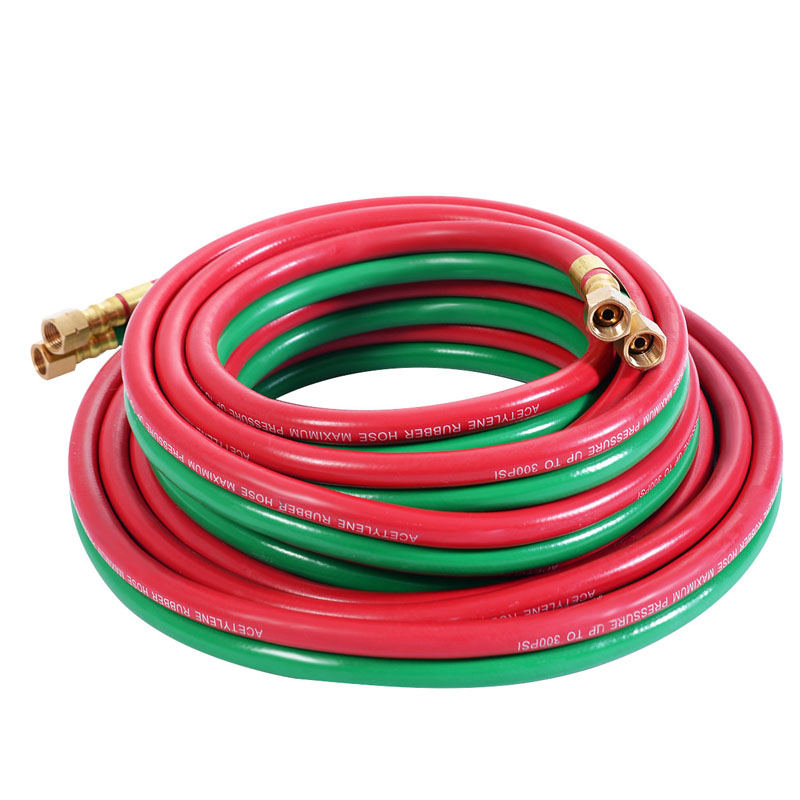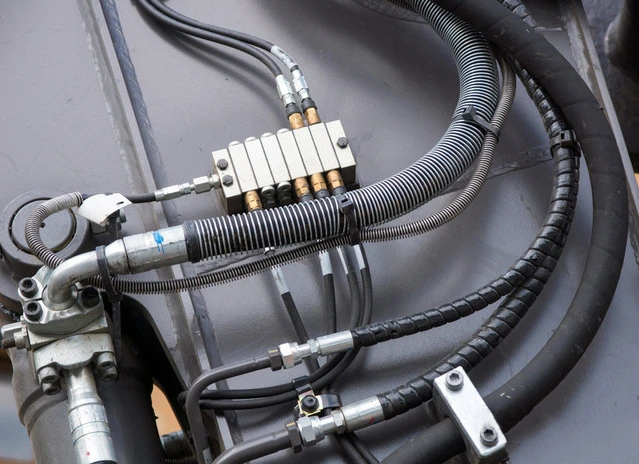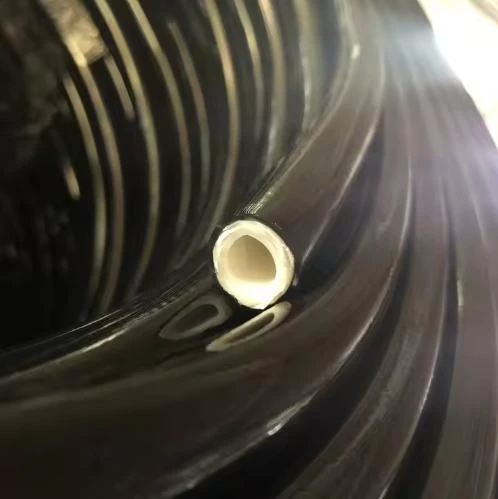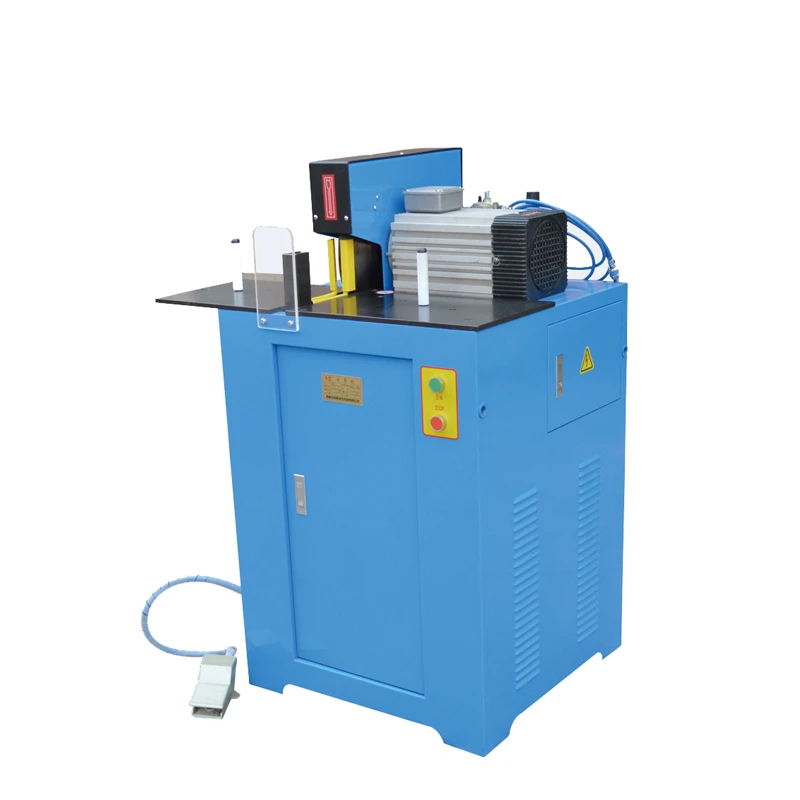溶接ホース
溶接ホースは、溶接、切断、その他の工業プロセスで使用されるガスを安全に輸送するために設計されたフレキシブル ホースの一種です。これらのホースは、高圧および高温の環境に対応できるように特別に設計されており、溶接用途で使用される酸素、アセチレン、プロパン、その他の燃料ガスなどのガスに最適です。溶接ホースの構造には、通常、摩耗、熱、および化学物質への曝露に耐性のある耐久性のあるゴムまたは熱可塑性材料が含まれています。ホース内には通常、酸素用と燃料ガス用の 2 つの異なるラインがあり、これらが混ざらないようにしています。溶接ホースは、金属加工、建設、自動車修理、造船、メンテナンスなどの業界で一般的に使用されています。溶接トーチや切断ツールにガスを安全に送り、ろう付け、はんだ付け、金属の火炎切断などの作業に必要な炎を提供するために不可欠です。ホースは、使用中に危険な事故を引き起こす可能性のある漏れ、ねじれ、破裂を防ぐように設計されています。溶接ホースは、さまざまな溶接設定に対応するためにさまざまなサイズと長さがあり、その構造により、溶接作業に特有の高圧と高温に耐えることができます。溶接ホースは、二重の目的を持ち、堅牢な設計であるため、金属加工やその他の工業プロセスにおける安全性、効率性、有効性を確保する上で重要な役割を果たします。
溶接ホースを選択する際に考慮すべき主な機能は何ですか?
溶接ホースを選択する際には、特定の溶接用途に適していることを確認するために、いくつかの重要な特徴を考慮する必要があります。最も重要な要素の 1 つはホースの材質です。ホースは耐久性があり、熱、摩耗、化学物質への曝露に耐える必要があります。ほとんどの溶接ホースはゴムまたは熱可塑性材料で作られており、高温条件下でも完全性を維持しながら、柔軟性と耐摩耗性を備えています。溶接ガスはしばしばかなりの圧力下で保管および輸送されるため、ホースは高圧に耐えられる必要があります。使用中に破裂したり破損したりしないように、適切な圧力定格のホースを選択することが重要です。さらに、溶接ホースは通常、酸素用と燃料ガス用の 2 つの別々のラインで設計されており、ガスが分離され、混ざって危険な状況につながることがないようにします。溶接ホースは屋外環境で使用されることが多いため、ホースの外側のカバーも摩耗、紫外線、気象条件などの外部要因に耐える必要があります。ホースの長さと直径は、溶接プロセスのニーズと、ガス源と溶接現場の距離に基づいて選択する必要があります。さらに、使用されるガスの種類との互換性も重要です。たとえば、酸素サービスに使用するホースは、酸素での使用に適した定格でなければならず、油やグリースなど、酸素と反応する可能性のある物質を含んではなりません。最後に、ホースが溶接用途に必要な安全基準を満たしていることを確認するために、OSHA や米国防火協会 (NFPA) などの業界認定や安全基準への準拠を確認することが重要です。
安全を確保するために、溶接ホースはどのように保守および保管すればよいですか?
溶接ホースの適切なメンテナンスと保管は、使用中の安全性と寿命を確保するために不可欠です。ホースの定期的な検査を実施して、特に継手付近やホースが鋭利な物体や粗い表面と接触する箇所に、切れ目、摩耗、ひび割れ、漏れなどの摩耗の兆候がないか確認する必要があります。市場で人気のあるゴム製溶接ホースも、これらの検査の対象となります。
溶接ホースに損傷が見つかった場合は、潜在的な危険を避けるためにすぐに交換する必要があります。ホースの故障を防ぐには、ホースが指定された圧力と温度の制限内で使用されていることを確認してください。これらのパラメータを超えると破裂する可能性があります。溶接ホースは、有名な溶接ホースメーカーのものかどうかに関係なく、使用後は清潔で乾燥した場所に、直射日光、極端な温度、または材料を劣化させる可能性のある化学物質から離れた場所に適切に保管することが重要です。
ホースの溶接技術はホースの完全性に影響を与えることがあるため、検査の際にはこれらの点に注意を払うことが重要です。ホースを緩く巻くことは、ねじれや曲がりを防ぐために重要です。急激に曲がるとホースが弱くなり、寿命が短くなる可能性があるためです。溶接ホースを保管するときは、きつく巻きすぎず、吊るすか平らに置くようにしてください。
さらに、溶接ホースは汚染物質、特に油、グリース、または移送されるガスと反応する可能性のあるその他の物質から保護する必要があります。特に酸素ホースでは、わずかな汚染物質でも危険な状況を引き起こす可能性があります。溶接ホースが過酷な使用や過酷な環境にさらされる場合は、定期的に清掃とメンテナンスを行って、汚染物質の蓄積を取り除く必要があります。
毎回使用する前に、溶接ホースのすべての継手と接続部を点検し、確実に取り付けられ、漏れがないことを確認することが重要です。ホースリールや保管フックを使用すると、ホースを整理し、もつれや摩耗による損傷を防ぐこともできます。これらのメンテナンスと保管の慣行に従うことで、溶接ホースの安全性、信頼性、パフォーマンスが維持され、作業者にとって安全な作業環境が確保されます。
Twin-line Structure and Safety Design Principles: Welding Hoses
SINOPULSE revolutionizes industrial safety through the engineering of twin welding hoses with a cutting-edge dual-chamber structure. Engineered for precision and reliability, our rubber twin welding hoses address the critical need for safe gas separation in high-risk welding and cutting operations, setting a new standard for performance and protection.
At the heart of SINOPULSE’s welding hoses lies a dual-channel architecture, featuring independent inner tubes dedicated to oxygen and combustible gases such as acetylene or propane. This physical separation is not merely a design choice but a safety imperative: by preventing the mixing of explosive gas combinations, it eliminates the risk of catastrophic ignition within the hose itself. The oxygen chamber, constructed from premium rubber compounds, adheres to strict non-oil and non-grease standards, ensuring compliance with oxygen service safety protocols. Meanwhile, the gas chamber is formulated to resist degradation from hydrocarbons, maintaining integrity even under prolonged exposure to aggressive fuel gases.
To fortify this innovative structure, SINOPULSE integrates multiple reinforcement and protection layers. A robust braided layer, typically composed of high-tensile synthetic fibers or stainless steel, wraps around each chamber, providing mechanical strength capable of withstanding working pressures of up to 20 bar and burst pressures exceeding 60 bar. This reinforcement prevents tube collapse or rupture, safeguarding against sudden failures that could endanger operators. The outer cover, crafted from abrasion-resistant rubber, acts as a shield against external threats: it repels sparks, resists flame penetration, and withstands mechanical impacts common in welding environments. Select models also incorporate anti-static properties, dissipating electrical charges to eliminate ignition risks posed by static buildup.
SINOPULSE’s commitment to safety extends beyond material and structural design. Our twin welding hoses adhere to international safety standards, ensuring seamless integration into industrial safety protocols. The dual-chamber design further optimizes performance by maintaining consistent gas flow rates, enabling welders to achieve precise control over flame temperature and cutting precision.
In metal fabrication, shipbuilding, and construction—industries where safety is paramount—SINOPULSE’s rubber twin welding hoses offer a reliable solution that combines advanced engineering with uncompromising protection. Trust in our hoses to deliver both safety and efficiency in every welding operation.
Selection Decision Tree for Welding Hoses by Gas Type
As a trusted welding hose manufacturer, SINOPULSE understands that selecting the right hose depends on the specific gas used in your welding or cutting application. Different gases—oxygen, acetylene, propane, or inert gases like argon—have unique chemical and physical properties, requiring tailored hose designs to ensure safety, efficiency, and compliance. Below is a structured guide to help you choose the ideal twin welding hose or single-line solution for your needs.
1. Oxygen (O₂) Hoses: Prioritize Purity and Non-Reactivity
Oxygen hoses transport compressed oxygen to fuel the welding flame, making material compatibility critical. SINOPULSE’s rubber twin welding hoses for oxygen feature:
Non-Oil, Non-Grease Inner Tubes: Constructed from premium EPDM or neoprene rubber to prevent hydrocarbon contamination, which can cause explosive reactions with pure oxygen.
Flame-Resistant Outer Covers: Engineered to withstand sparks and radiant heat, reducing fire risks in high-temperature work environments.
Pressure Ratings: Working pressures up to 20 bar (290 PSI) to meet standard oxygen service requirements, with burst pressures exceeding 60 bar (870 PSI) for safety redundancy.
2. Acetylene (C₂H₂) Hoses: Resist Hydrocarbon Degradation
Acetylene, a highly flammable gas, requires hoses that can withstand its reactive nature and low working pressures (typically ≤1 bar). Key selection criteria for SINOPULSE acetylene hoses include:
Hydrocarbon-Resistant Compounds: Inner tubes made from butyl rubber or chloroprene to prevent swelling or cracking caused by acetylene exposure.
Anti-Static Properties: Optional conductive layers to dissipate static charges, a critical safety feature for preventing ignition in volatile environments.
Color Coding: Mandatory red outer covers for easy identification, aligning with international safety standards for acetylene lines.
Flexibility in Low Temperatures: Maintains pliability down to -20°C, ensuring reliable performance in cold climates or outdoor welding.
3. Propane (C₃H₈) and Natural Gas Hoses: Balance Pressure and Flexibility
Used in cutting and heating applications, propane hoses must handle moderate pressures (up to 5 bar) while resisting cold brittleness. SINOPULSE solutions offer:
Low-temperature Resistant Formula: Specialized thermoplastic rubber (TPR) inner tubes that remain flexible at -40°C, ideal for construction or agricultural welding in frigid conditions.
Abrasion-Resistant Outer Layers: Thickened rubber covers to withstand rough handling on job sites, where hoses may drag over gravel, metal, or concrete.
Leak-Proof Fittings: Compatibility with propane-specific connectors to minimize gas loss and ensure secure connections during high-demand operations.
4. Inert Gases (Argon, Helium): Ensure Purity for TIG/WIG Welding
For TIG (Tungsten Inert Gas) welding, where gas purity is essential for weld quality, SINOPULSE recommends:
High-Purity Inner Tubes: Smooth-bore polyethylene or silicone liners that prevent gas contamination, critical for welding stainless steel or aluminum.
Low Permeability Design: Multi-layer construction to minimize gas diffusion, ensuring consistent shielding gas flow and reducing porosity in welds.
Lightweight Construction: Braided synthetic fiber reinforcement for easy maneuverability during precision welding tasks that require fine control.
Key Decision Factors Across All Gases
Gas Compatibility: Always verify that the hose’s inner tube material is rated for your specific gas (e.g., acetylene requires non-copper alloys in fittings to avoid acetylide formation).
Pressure vs. Temperature: Match the hose’s working pressure (e.g., low-pressure acetylene vs. high-pressure oxygen) and temperature range (-40°C to +80°C for most models).
Environmental Hazards: Choose anti-UV covers for outdoor use, spark-resistant layers for proximity to welding arcs, or chemical-resistant coatings for industrial environments with corrosive agents.
Dual vs. Single Chamber: Twin welding hoses are ideal for oxy-fuel setups requiring parallel oxygen and gas lines, while single-line hoses suit inert gas or standalone fuel systems.
Trust SINOPULSE for Tailored Solutions
With decades of expertise in welding hose engineering, SINOPULSE offers a comprehensive range of rubber twin welding hoses and single-line products, each designed to meet the unique demands of your gas type and application. Our team can help you navigate certifications, material specifications, and custom fittings to ensure your welding system operates safely and efficiently.
Contact us today to discuss how our precision-engineered hoses can elevate your welding operations.












